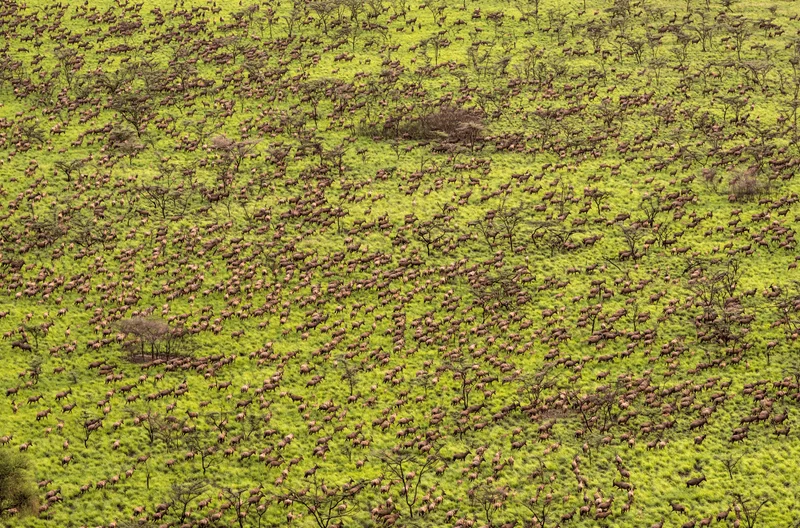Scientists witness largest animal migration in Africa
- June 29, 2024
- 0
Scientists have recorded the largest migration of land mammals in the world: Nearly 6 million wildebeest cross East Africa. This impressive event was made possible thanks to the
Scientists have recorded the largest migration of land mammals in the world: Nearly 6 million wildebeest cross East Africa. This impressive event was made possible thanks to the

Scientists have recorded the largest migration of land mammals in the world: Nearly 6 million wildebeest cross East Africa. This impressive event was made possible thanks to the cooperation of African Parks and the South Sudanese government, which implemented a large-scale project to monitor the migration routes of animals.
Following the first rains of the season, between April 28 and May 15, 2023, aircraft conducted a large-scale aerial survey of the Boma Badingilo Jonglei region in eastern South Sudan. The results are impressive: nearly 5 million white-eared kob antelopes, 300,000 tiangs, 350,000 Mongolian gazelles and 160,000 Bohor reed antelopes have been documented migrating.
“The results of this study are simply stunning. “The staggering scale of migration is matched only by the responsibility of ensuring its future survival in a highly complex environment,” said Peter Fernhead, Director General of African Parks. As well as wildebeest, scientists have found significant populations of elephants, giraffes, lions and cheetahs. as well as large bird populations such as open-billed stork, marabou, yellow-billed stork and black crane.
Although there is a significant amount of wildlife in the region, biodiversity faces numerous threats. A comparison with studies from the 1980s shows a catastrophic decline in resident species such as elephant, wild boar, cheetah, hippo and buffalo. One of the main threats is illegal poaching, which Fernhead says has reached an unprecedented level.

The situation is further complicated by the effects of years of civil war and ethnic violence in South Sudan, which have affected animal movements and made wildlife surveys nearly impossible. The future of these ecosystems depends on how human relations in the region will be improved.
“This wildlife and the wider ecosystem underpin the survival of many ethnic groups who are often in conflict over resources. Successful management of this environment will only be possible by building trust between these groups,” Fernhead explained. Working with local communities to protect this important ecosystem will help preserve the phenomenon of global migration and ensure stability and sustainable development for people living in the region.
The future of the great migration depends on a joint effort to protect the natural environment and strengthen peace in South Sudan. Only through joint action can we ensure that this magnificent natural phenomenon continues to exist and pleases future generations. Source
Source: Port Altele
As an experienced journalist and author, Mary has been reporting on the latest news and trends for over 5 years. With a passion for uncovering the stories behind the headlines, Mary has earned a reputation as a trusted voice in the world of journalism. Her writing style is insightful, engaging and thought-provoking, as she takes a deep dive into the most pressing issues of our time.